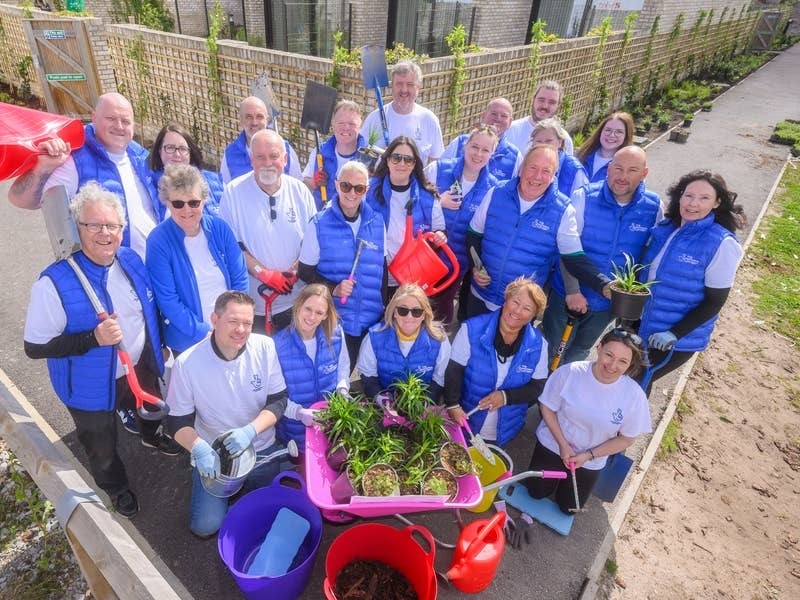The investigation, by Guernsey Harbourmaster Captain Chad Murray, found that the UK-based RNLI failed to properly manage the station for years and should never have investigated an informal complaint about coxswain Andy Hibbs which ultimately triggered the breakdown in the relationship between the charity and local crew.
Mr Hibbs, meanwhile, was described as a leader with too much power, which led to a ‘toxic culture’ and ‘selective cult’ where crew members would not challenge his decision-making because of ‘fear of reprisals’.
And the report adds that the decision by the crew to stand down in April following Mr Hibbs’ dismissal was apparently not unanimous – but no crew member was willing to speak out, partly due to alleged ‘cyber bullying’ on social media.
When contacted by the JEP, Mr Hibbs declined to comment at length, but described the report as ‘total and utter rubbish’.
He said that Captain Murray had not interviewed the crew during his investigation, and added: ‘How he has come to this conclusion is beyond me.’ (Further reaction: Page 4)
The States commissioned the report following a tumultuous year for the town crew, during which they stood down last spring in protest after Mr Hibbs was effectively sacked.
They returned to duty later in the year after Mr Hibbs was reinstated – but relationships continued to sour, leading the RNLI to close the station and take the all-weather lifeboat back to Poole in November. The Jersey Lifeboat Association, comprising former members of the town station, was formed earlier this year.
The report claims that relationships within the Jersey search and rescue community ‘appear to have deteriorated’ over at least ten years.
The catalyst for last year’s dispute was when the then Harbourmaster, Captain Phil Buckley, made an informal complaint to the RNLI chief executive that Mr Hibbs had ‘self-launched’ the inshore lifeboat on 28 October 2016 without being requested by the Coastguard.
The RNLI investigated and found that proper procedures had mostly been followed and the complaint was dismissed. However, during the investigation the charity found that ‘significant breaches of the volunteer code’ had occurred, leading to a ‘serious breakdown in working relationships’, and Mr Hibbs was stood down. The crew then walked out in protest.
It is understood the alleged breaches were in relation to the manner in which Mr Hibbs communicated with the charity.
Following an appeal, Mr Hibbs was reinstated and the crew then lodged a complaint about the RNLI area manager’s conduct during the investigation. The complaint was dismissed and the relationship continued to decline.
Captain Murray concluded that:
* There has been ‘inconsistent oversight and management of the RNLI St Helier Lifeboat Station by RNLI headquarters, resulting in a lack of leadership and guidance at the station’. This, he said, resulted in the station ‘being left to its own devices’.
* In recent years the local management of the town station ‘has largely been ineffective’.
* A culture existed where the coxswain was effectively ‘in charge without oversight or opportunity to challenge’.
* In defence of Mr Hibbs, the lack of management by the central RNLI required ‘some form of decision making’, although this may not have been ‘aligned to RNLI policies and procedures’.
* In recent years, a ‘toxic culture ensued where members of the RNLI St Helier Station would not challenge decisions made by the coxswain, in fear of reprisals’. The report adds that a ‘selective cult was described to exist’ and ‘behaviour which could be construed by some as cyber bullying on social media was prevalent’.
* Neither the crew’s decision to stand down in protest in April nor the later decision to resign and form an independent service was unanimous, but some members were unwilling to speak out through ‘fear of reprisal’.
Captain Murray found that the informal complaint made by the then Harbourmaster to the RNLI ‘should not have been investigated and led to conspiracy theories around the matter’.
He went on to say that when the issue was concluded and the crew returned to duty, concerns were raised over the ability of some members to put ‘the matter in the past without seeking revenge’.
Captain Murray made eight recommendations, including that a search and rescue committee should be formalised and memorandums of understanding should be established between Jersey Coastguard and all search and rescue partners to ‘define relationships, asset availability, expectations and common lines to take’.
The report adds that at no point during the dispute were lives put at risk, and that a committee of inquiry into the events, which the States are being asked to approve, is unnecessary.
***
THE St Helier station reopened last year when the inshore lifeboat was brought back into service. The all-weather lifeboat is due to be back in full service within weeks and a training programme for new recruits is under way. Captain Murray’s report concluded that the RNLI should remain a major partner in Jersey’s search and rescue community. He set out eight recommendations:
1. Memorandums of understanding should be established between Jersey Coastguard and all search and rescue partners to define relationships, asset availability, expectations and common lines to take.
2. In addition to a memorandum of understanding between Jersey Coastguard and the RNLI specifically, Jersey Coastguard, the States and the RNLI should agree to a routine communications strategy.
3. The RNLI should continue with its progress to provide a more regular presence of management in Jersey by way of the area manager and area lifesaving manager roles. This was already in progress prior to the dispute.
4. The RNLI should consider a joint Jersey RNLI management group to provide oversight, governance and leadership to all RNLI interests in Jersey. This is essentially the informal default position adopted in recent months and has proved successful.
5. The local search and rescue committee should be formalised with terms of reference agreed and published.
6. Policies should be reviewed and re-issued by all organisations for individuals to be able to report welfare matters in confidence and without reprisal.
7. Policies around the use of social media should be reviewed.
8. A formal committee of inquiry, while ultimately a matter for the States, is considered unnecessary at a professional level given the amount of information available in the public domain and that, essentially, the events of 2017 were an internal matter for the RNLI St Helier Lifeboat Station.






